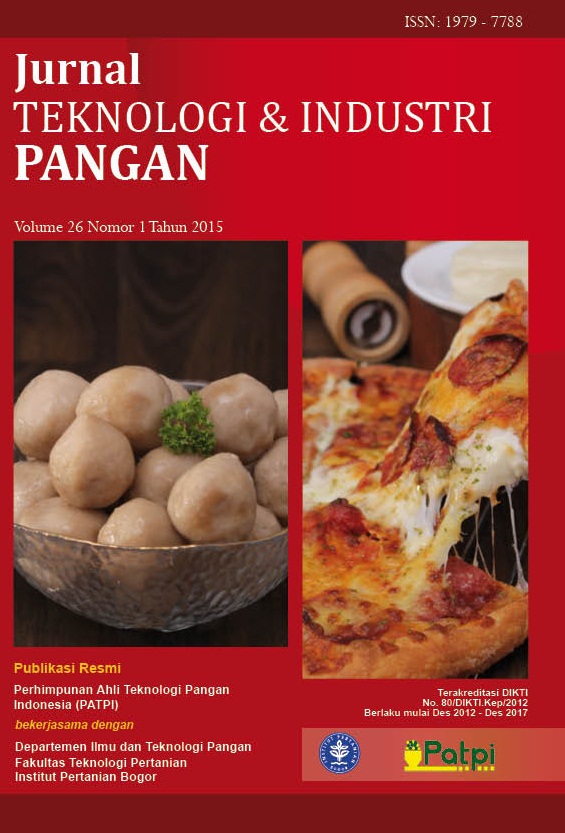REDISTILAT ASAP CAIR CANGKANG KELAPA SAWIT SEBAGAI BAHAN PENGAWET BAKSO SAPI
Abstract
Liquid smoke has been used to extend the shelf life of food. However, its composition varies considerably depending on the type of raw materials used and preparation precedure. Liquid smoke derived from palm oil shell is potential due to the abundance of its byproduct sources in the palm oil industry. This study thus aims to prepare the best fraction of liquid smoke that can extend the shelf life of beef meatballs at room temperature. The raw liquid smoke was redistilled at 80, 90, and 100°C and was used as an ingredient in the beef meatballs production. The gas chromatography-mass spectrometry identification showed that there were no harmful compounds such as derivatives of tar and polycyclic aromatic hydrocarbons. Liquid smoke produced from redistillation at 80°C had the best result for providing higher acid value and lower pH, i.e. 5.14% and 2.26, respectively. The LC50 value of the redistilled liquid smoke in brine shrimp lethality assay was 0.16%. Inhibition zones of 0.1 and 0.8% redistilled liquid smoke on the antibacterial test against Staphylococcus aureus were both 6.10 mm, while the zones of inhibition for Escherichia coli were 0 and 7.0 mm, respectively. These resulting inhibition zones were less effective than that of 100 ppm chloramphenicol, i.e. 14.2 mm on S. aureus and 12.6 mm on E. coli. The usage of redistilled liquid smoke at concentration of 0.8% in meatballs was found to inhibit total microbial growth greater than that of the addition at 0.1%. Moreover, the addition of redistilled liquid smoke inhibited the growth of microbial up to 18 hours at room temperature.

